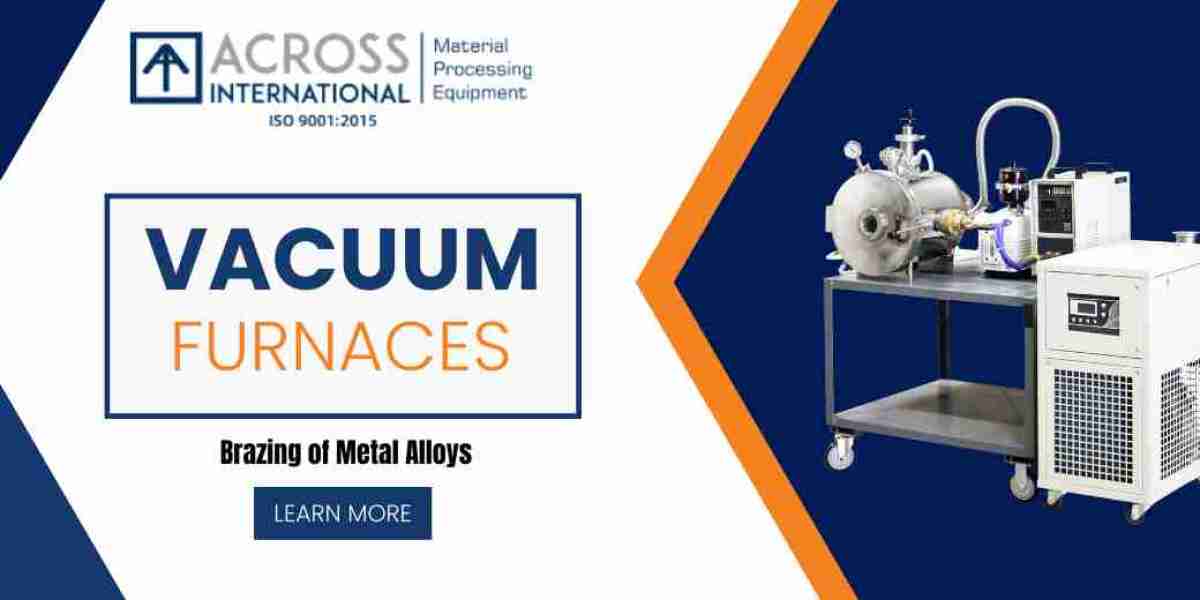Brazing is a process by which two or more parts are joined by a layer of brazing alloy. By using a high-temperature vacuum furnace with precise temperature control, the brazing process can create extremely durable bonds between dissimilar metal materials, including both ferrous and nonferrous metals.
Unlike welding, the vacuum brazing process allows the finished parts to be free of oxidation and to maintain a clean appearance. Brazed parts exhibit high joint strength and excellent part-to-part uniformity in both appearance and dimensions. Brazing also allows for complex joint geometries.
We can braze virtually any industrial metal alloy including stainless steel, nickel and copper – as well as Molybdenum, Kovar and other more exotic alloys. In addition, we can braze and heat-treat in the same cycle – for maximum part performance and a streamlined production process.
Active Metal Brazing: Ceramics
With active metal brazing, ceramic parts can be joined together or joined to metal parts. We can braze metal to metal, metal to ceramic, and ceramic to ceramic. In addition, our vast experience in diamond toolmaking allows us to braze diamonds into metal alloys.
Heat Treatment of Steels and Other Alloys
Vacuum furnace heat treatment allows for oxidation-free hardening, stress relieving, and cleaning of metal parts. Across International manufacturers customize vacuum oven furnace heat treating equipment’s used for precipitation hardening of metal alloys, which is critical for many medical and industrial applications.
Our vacuum furnaces are also ideal for relieving residual and structural stresses in metal alloys. By maintaining precise control of temperature during both heating and cooling, we able to effectively relieve most stresses in most metal materials Across International heat treating furnaces can help you dramatically improve the appearance and performance of your metal parts.
Industries Using Across International Vacuum Furnaces
Below is a variety of industries that require the use of our furnaces along with a sample of the Lab furnaces that are suited to those industrial needs.
AEROSPACE/AVIATION
Manufacturing in the aerospace industry requires advanced technology that meets stringent specifications to produce aircraft, guided missiles, space vehicles, aircraft engines, propulsion units, and related parts.
MEDICAL EQUIPMENT MANUFACTURING
Precision components for electronics and medical devices require specific processes to ensure proper fit and safety. From laboratory furnaces to high production furnaces, Across International has the right furnace for your application. Speak with our Tech Engineers for your needs .
ADVANCED CERAMICS
High temperature firing of ceramics is a very dynamic field. Tiles used on the space shuttle are just one high-profile example of how advanced ceramics are used. Many ceramic components start as fibrous or slurry-based materials. Industrial furnaces can refine and transform the ceramics in various ways by being exposed to high temperatures.
CUTTING TOOL MANUFACTURING
Many types of tool materials ranging from high carbon tool steel to ceramics and diamonds are used as cutting tools in today’s metalworking industry. These materials often require precise sintering to ensure that the tool will have the correct hardness, toughness and wear resistance required for the task. Lab furnaces play an important role in the cutting tool manufacturing process.
BODY & VEHICLE ARMOR PRODUCERS
Industrial furnaces are used in advanced ceramics industry for sintering at ultra high temperatures. Armor is used on vehicles to protect occupants and parts from attack. It is also used on aircraft to protect against medium small arms fire.
POWDERED METAL PARTS & METAL INJECTION MOLDING
Powder metal parts are produced from a very fine metal powder that is compressed and sintered to achieve its final shape. The powder metal manufacturing process makes it possible to create parts with an extremely complex geometry with reduced manufacturing cost. Finished products are small components used in many industries and applications.
Read Here More About Vacuum Furnace Brazing Of Metal Alloys








